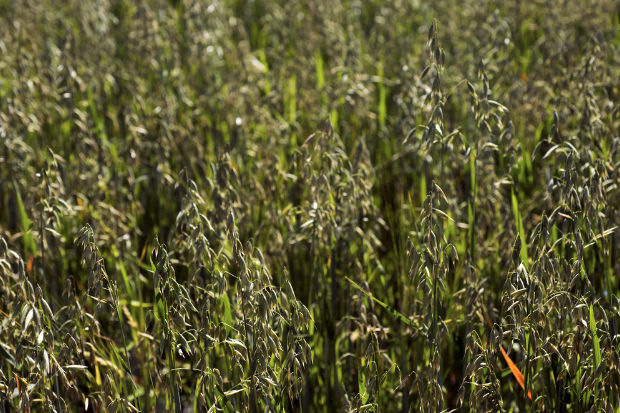
Winter forages are a great way to get the most productivity of your land. Mostly used as a cover crop option after corn or soybeans, winter forages can supply the nutrients and organic matter back into your soil and/or supply your livestock with extended grazing into the winter (while saving money on feed). However, winter forages can also be seeded into pastures that may have had a rough year because of drought or excessive grazing.
Traditional winter annuals include oats, wheat, triticale, rye, barley and legumes, such as clover or winter peas. Each species has its advantages and characteristics depending on the amount of rainfall, timing of planting and soil conditions. It’s important to choose the type of crop that will work best for your area and goals. Here are a few things to consider when choosing a winter forage.
Oats
Best planted in the early fall, oats are a cost effective option for a cover crop. They are fast growing, do great with the cool fall weather and provide great feed value. Oats will die out with a hard cold, but they will continue to provide soil protection until planting time next spring. Winter Oats and Bob Winter Oats are both great options that do well when planted with winter annual legumes. Oats require good planting conditions to get started right and achieve optimum growth, but they provide an excellent forage for early winter grazing.
Wheat
A great way to diversify and extend your grazing season is to plant both wheat and oats. However, it is recommended to plant them separate from each other. That way if conditions cause one to lose its stand, the other will not be affected and continue to stay hardy.
A good time to plant wheat is mid-October. Like oats, wheat is an easy, consistent and inexpensive winter forage option. Wheat is winter hardy and can be used for grazing as well as hay. Cow★Pro Forage Wheat produces a lot of straw with its exceptionally tall height. It is also disease resistant and stands up well to harsher weather conditions.
Triticale
Triticale is a cross species of wheat and rye and is mainly used for winter pasture but can also be used for silage and hay. It’s known for its digestibility and great yields. Outlaw Triticale comes with the yield potential of rye grain and the feed quality of wheat. It is also a great choice for double-cropping systems because of its earlier heading date. Outlaw is known for its winter hardiness and high protein.
Rye
While rye may be on the higher priced end of winter forages, it is one of the hardier options offering the highest yields. Because it is winter hardy, rye has a high ability to trap soil nutrients. Consider a product like Albion Tetraploid Perennial Ryegrass that is known for its deep roots making it more heat and drought tolerant. Experts do recommend soil sampling prior to planting as establishment is dependent on proper nutrient levels.
Ultimately, planting winter forages is a great way to add and keep nutrients in your soil over the winter while reducing your feed cost. Mixing species such as grass and clover for forage is a great way to bring a complete nutritional diet to your herd, and provides the best weed control. However, segregation of species is the simplest option.
As always, the experts with Missouri Southern Seed can help you choose the right winter forage for your land and goals.
